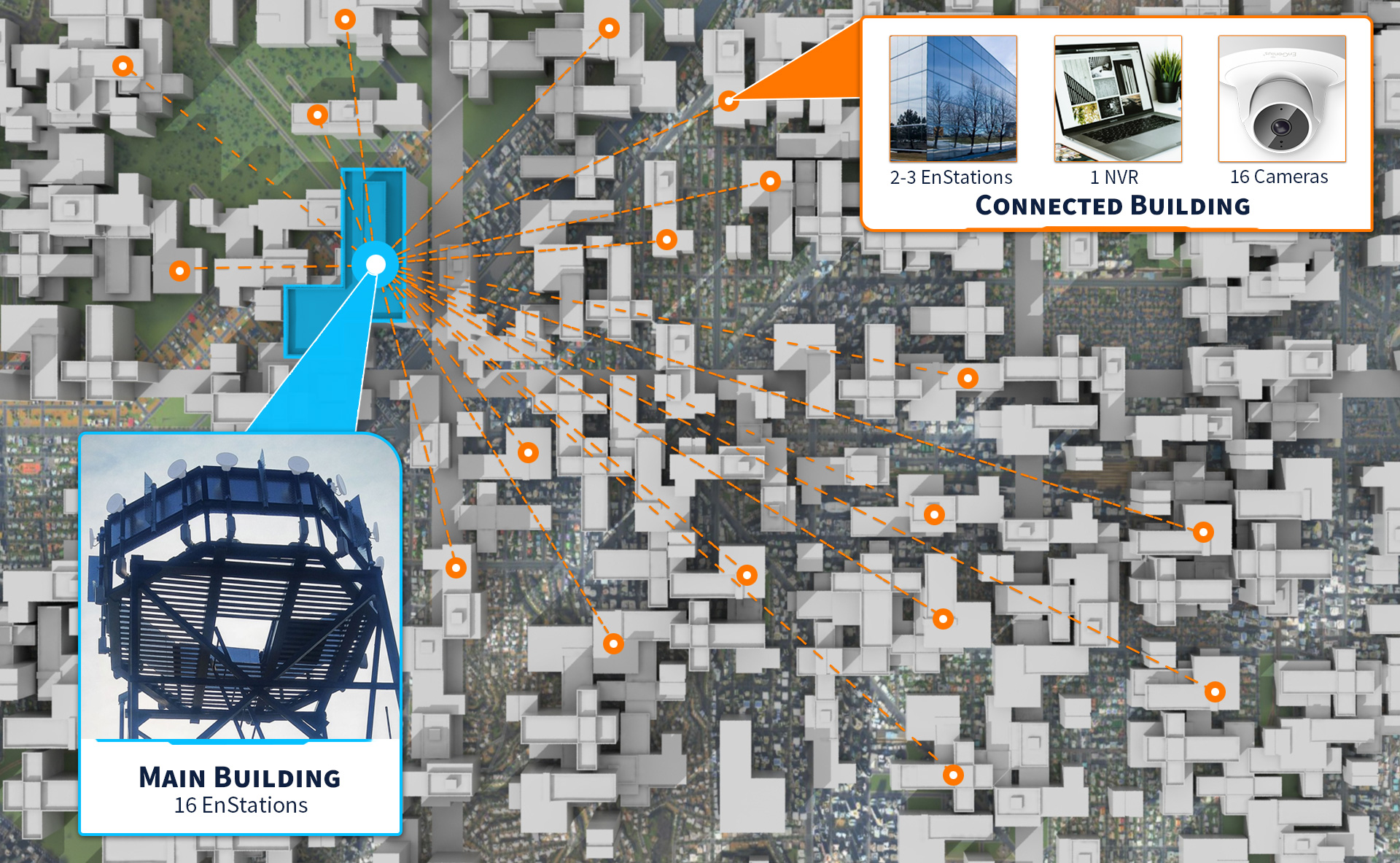Wireless video offers important advantages for organizations looking to implement surveillance in challenging situations, such as multibuilding campuses or large areas.
Projects such as these typically require many cameras to be installed, some in specific areas to guard major assets or entry points, and distances to the nearest switch can be hundreds of feet or more.
Going wireless can save the time, cost and potential disruption associated with installing fiber cable. The cables can also be vulnerable to physical attacks, and ensuring protection adds further cost.
Conversely, wireless brings its own concerns. Streaming video demands plentiful and reliable bandwidth, especially when high-resolution cameras or large numbers of IP cameras are streaming content to bridges or access points.
A suitable wireless protocol must also provide adequate in-built security to prevent unauthorized parties intercepting the video. Capturing that could help them to spot any weaknesses in the site’s security defenses, or even spy on individuals or sensitive activities.
WiFi Steps Up
The current WiFi Protected Access (WPA2) encryption is regarded as being robust. Fortunately, with the arrival of the latest 802.11ac specification, 5GHz WiFi now also provides reliable bandwidth and allows long-range communication over point-to-point and point-to-multipoint connections. As such, it is a practicable option for large security installations.
802.11ac achieves its excellent radio performance by utilizing multiantenna beamforming techniques, like forthcoming 5G cellular technology. Directional PTP antenna has genuine speeds of up to 867 Mbps that approaches those of wired Gigabit Ethernet and can easily handle streaming multiple channels of high-resolution video.
Speed and range will be at their best if the endpoints and access points are positioned intelligently, away from obstructions that can block or scatter signals. For this reason, mounting on high structures or purpose-built masts can be most successful. Doing so also keeps equipment away from interfering hands.
WiFi offers the reliable bandwidth and robust security needed for streaming surveillance video. However, installers also need to be sure that the chosen equipment can stand up to the environment in which it is deployed and can provide flexibility when it comes to connecting and powering infrastructure such as bridges and cameras.
Antennas and access points installed outdoors need robust enclosures, for example, and pass-through PoE ports are a beneficial feature: they simplify distributing power to where it’s needed, such as cameras or additional bridges and switches.
Wireless Video in Practice
A recent project at an apartment complex in Brooklyn, N.Y., shows how the new WiFi standards can be used in security installations. The installer, Homeland Surveillance Installations (HSI), needed to connect 59 brick buildings across seven city blocks; a total of 30 acres. The team wanted to go wireless to eliminate the vulnerabilities that come with cables and deliver a cost-effective solution within a short time frame.
HIS identified a 5GHz high-powered long-distance 802.11ac wireless outdoor AP/client bridge, the EnStation5-AC. Housed in an IP55 enclosure, it provides dual-PoE (Power over Ethernet) Gigabit ports and has a high-gain directional antenna with a narrow signal beam and genuine 867 Mbps speeds over long distances.
As far as security is concerned, there is WPA2 protection with Advanced Encryption Standard (AES), as well as client isolation that prevents individual devices on the network from seeing each other. Support for e-mail alerts automatically sends notifications if threats are detected.
HSI deployed 16 of these point-to-multipoint APs at the top of a central tower, each communicating with up to four corresponding APs throughout the complex. One or more was installed on each building. The 802.3af PoE support provided by the access points let the team extend equipment-deploying distances over 300 feet. Delivering up to about 13W, it can easily power an IP camera.
The 16 access points on the central tower are in turn connected to four 24-port switches located in the central tower building. The access points in each building connect to 16-port NVRs, each of which connects up to 16 surveillance cameras.
One intriguing deployment was to arrange surveillance inside an elevator, using paired access points in the elevator car and at the top of the shaft. A PoE port in the car powers a surveillance camera that monitors the activity inside.
In total, 975 surveillance cameras are connected and powered through the network of access points and switches. These are located in and around all 59 buildings, giving coverage throughout the entire complex including clear views of important locations such as entryways, stairwells, hallways and building exteriors. HD video from all these cameras is streamed to a central command center, from where security personnel can monitor activity throughout the complex.
The success of this project shows how, using the right equipment, a knowledgeable security dealer or systems integrator can leverage the strengths of the latest WiFi technology to extend secure, reliable video surveillance throughout a large area and quickly deliver a cost-effective, cable-free solution.
Eddie Lee is Senior Product Line Manager at Costa Mesa, Calif.-based EnGenius Technologies. This article originally ran in CS’ sister publication Security Sales & Integration.













